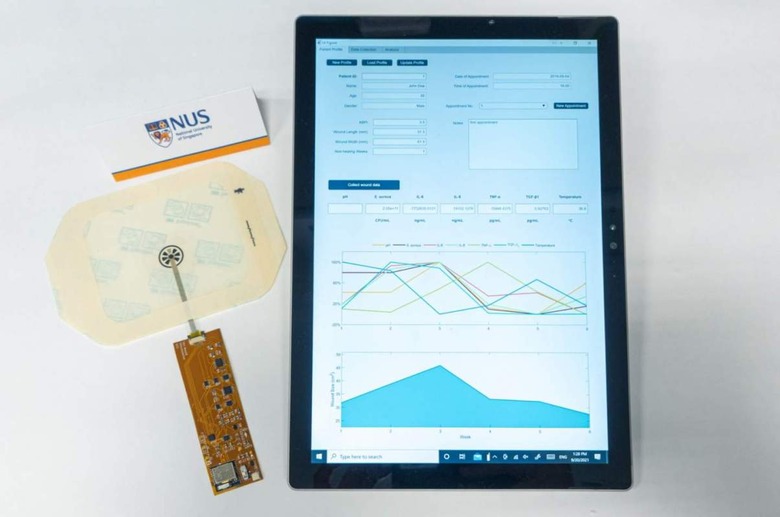New Smart Bandage Can Detect Biomarkers In Chronic Wounds
Researchers from the National University of Singapore Department of Biomedical Engineering and the Institute for Health Innovation & Technology have worked with partners from other organizations to develop a new smart wearable sensor. The wearable sensor can assess chronic wounds in real-time at the point of care wirelessly via an app. The wearable sensor is described as the world's first to detect temperature, pH, bacteria type, and inflammatory factors specific to chronic wounds.The sensor can begin collecting data within 15 minutes, allowing caregivers to provide fast and accurate assessments of wounds. The goal of the wearable sensor is to enable better treatment for those suffering from chronic nonhealing wounds, including diabetic foot and chronic venous leg ulcers. Researchers estimate that about two percent of the world's population suffers from chronic wounds.

The healing of chronic wounds is typically impacted by various factors, including infection and repeated trauma. In addition, the wounds cause stress, pain, and discomfort to those dealing with them. Diabetic foot ulcers are particularly worrisome because they can lead to foot amputation. Therefore, chronic wounds require prompt care and proper treatment to speed wound recovery.
Typically, chronic wounds require patients to repeatedly visit a medical provider for assessment and treatment, adding to costs for treatment. The wearable sensor will help mitigate both the consequences of chronic wounds while providing relief to those who suffer from them and helping to reduce stress. The smart dressing is called VeCare and is the first wound assessment platform able to detect bacteria type and inflammatory factors.
The system includes a wound sensing bandage, an electronic chip, and a mobile app. The bandage has a wound contact layer, a breathable outer barrier, a microfluidic wound fluid collector, and a flexible immunosensor. The chip allows the sensor to transmit data without wires to the app allowing for real-time assessment and analysis. The chip is powered by a rechargeable battery and can be used multiple times.
